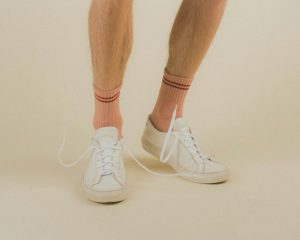Synthetic Biology Textiles Merging Technology and Fashion
Synthetic biology textiles, a revolutionary merging of science and fashion, is transforming the way we think about clothing. Gone are the days of simply throwing on a t-shirt made of cotton or a jacket made of wool. With advancements in technology and the rise of sustainable fashion, synthetic biology textiles are shaping the future of the fashion industry. From clothes that change color with the touch of a button to fabric that can repair itself, these bioengineered textiles are pushing the boundaries of what is possible in fashion. Let’s take a closer look at how synthetic biology is reshaping the way we wear and perceive clothing.
The Basics of Synthetic Biology Textiles
Synthetic biology is the application of engineering principles to biological systems, allowing scientists to manipulate DNA and create new biological components. With the use of genetic engineering tools, researchers can create microorganisms that produce specific proteins, enzymes, or other desired products. These components can then be incorporated into textiles, resulting in fabrics with unique properties and capabilities. This groundbreaking technology allows for the creation of sustainable materials, as well as the combination of science and fashion.
Sustainability in Fashion
Eco-friendly and sustainable fashion has become increasingly important in recent years, as consumers become more conscious of their environmental impact. Synthetic biology textiles offer a solution to the negative environmental impacts of traditional textile production. For instance, many synthetic biology researchers are focusing on creating biodegradable fabrics using bioplastics produced by microorganisms. This not only reduces waste but also decreases the use of traditional synthetic materials, such as polyester, which is a major contributor to microplastic pollution.
New Properties and Functions
One of the most exciting aspects of synthetic biology textiles is the ability to engineer fabrics with new and innovative properties. For example, researchers have successfully created a color-changing fabric by incorporating bacteria that produce pigments when exposed to heat or humidity. This could eliminate the need for chemical dyes, which can be harmful to the environment and human health. Another bioengineered textile, dubbed “biosteel”, is produced by genetically modified silk worms and boasts properties similar to that of steel. This incredibly strong and lightweight material has the potential to revolutionize the fashion industry, making durable and sustainable clothing a reality.
The Intersection of Technology and Fashion
Synthetic biology textiles are not only bringing sustainability to fashion, but also merging technology and fashion in new and exciting ways. With the introduction of smart textiles, clothing is no longer just for protection and decoration, but also for function. For example, a synthetic biology textile known as “BioCouture” is created by fermenting bacteria to produce cellulose, which can be molded into any shape and form. This opens up endless possibilities for creating new styles, shapes, and even 3D printed garments. Additionally, researchers are exploring the use of microorganisms to create self-healing fabrics, which could revolutionize how we think about clothing durability and maintenance.
Ethical Considerations
While the potential benefits of synthetic biology textiles are vast, there are also important ethical considerations to take into account. The use of genetically modified organisms (GMOs) in textile production raises concerns about their impact on the environment and potential safety risks. It is essential for researchers to carefully consider the implications of their work and ensure that proper regulations and safety measures are in place.
The Future of Synthetic Biology Textiles
The integration of synthetic biology into the fashion industry is still in its early stages, with most research being conducted in academic settings. However, there is a growing interest from fashion brands and companies to incorporate this technology into their production processes. As the demand for sustainable and innovative fashion continues to rise, it is likely that we will see more and more bioengineered textiles on the runway and in our wardrobes.
Synthetic biology textiles have the potential to revolutionize the way we produce and consume clothing. From creating sustainable and biodegradable materials to merging technology and fashion, these bioengineered fabrics are paving the way for a more sustainable and stylish future. While there are still challenges and ethical considerations to be addressed, the possibilities for synthetic biology textiles are endless, and we can’t wait to see what the future holds for this exciting field.










